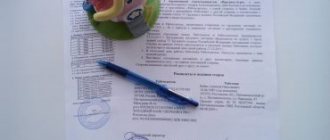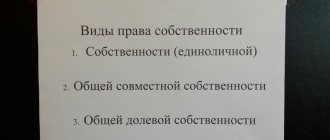Home / Real estate / Land / Purchase and sale / With a house
Back
Published: 01/20/2017
Reading time: 12 min
1
1236
When selling a plot of land (PL) with a house, the seller receives income. And in accordance with the Tax Code, personal income tax must be paid on income . However, the taxation of such sales has its own characteristics.
- Laws
- The amount of tax for the purchase and sale of land plots with a house
- Tax exemption
- Tax deductions
- Documents for receiving a deduction
- How to get 13% back
- Possible failures
Laws
Calculations and payment of taxes on the sale of land plots with a house must be made in accordance with the laws of the Russian Federation.
In particular, Chapter 23 of the Tax Code is devoted to general tax issues.
At the same time, Articles 217 and 217.1 clarify the issues of tax exemption for income received in real estate transactions, which include land plots with a house, and Art. 220 considers tax deductions for both sellers and buyers of real estate.
The letter from the Federal Tax Service clarifies issues related to the status of tax resident for citizens of the Russian Federation. This status is important when determining the amount of personal income tax.
Accounting
The building and the land plot underneath it, satisfying the conditions listed in clause 4 of the Accounting Regulations “Accounting for Fixed Assets” PBU 6/01, approved by Order of the Ministry of Finance of Russia dated March 30, 2001 N 26n, are accepted for accounting as separate objects of fixed assets (OS).
Fixed assets are accounted for at their original cost (clause 7 of PBU 6/01).
The initial cost of fixed assets acquired for a fee is recognized as the amount of the organization's actual costs for their acquisition, the list of which is established in clause 8 of PBU 6/01.
In this case, such costs are the amount paid to the seller for the acquired building and land (paragraph 3, clause 8 of PBU 6/01).
Moreover, if the costs incurred by the organization are associated with the acquisition of several fixed assets at the same time, the amount of such costs is distributed between these objects on the basis of a base chosen and justified by the organization, for example, in proportion to the cadastral value of real estate objects. Such clarifications are contained in Letter of the Ministry of Finance of Russia dated June 28, 2013 N 03-05-05-01/24812.
The cost of the building is repaid through depreciation (clause 17 of PBU 6/01). Depreciation charges under the linear method of calculating depreciation are calculated monthly based on the original cost of the building and the depreciation rate calculated on the basis of the useful life of the building, which is established by the organization when accepting the building for accounting. This follows from clause 18, paragraph. 2, 5 clause 19, clause 20 PBU 6/01.
Land plot, in accordance with paragraph. 5 clause 17 PBU 6/01, not subject to depreciation.
The amount of tax for the purchase and sale of land plots with a house
When calculating the tax on the sale of land plots with a house, it is first necessary to determine whether the seller has resident status.
A resident, regardless of citizenship, can be a person who stays in the country for > 183 days during the year.
In this case, departure abroad of the Russian Federation due to illness, study or to work in offshore fields for a period of less than six months is not taken into account. Military personnel and government employees sent abroad are also considered residents.
The remaining persons are not residents.
It is necessary to take into account the clarification expressed in the letter of the Federal Tax Service No. OA-3-17/4698.
In accordance with it, the absence of a citizen of the Russian Federation in the country for more than a specified period is not grounds for considering him a non-resident.
This is due to some international treaties, according to which an individual is considered a resident of the Russian Federation if he has a permanent home there.
In such cases, the issue of resident status is decided individually.
The tax rate on the sale of land plots with a house is set at the rate (Article 224 of the Tax Code):
- 13% - for residents of the Russian Federation;
- 30% - for non-residents of the Russian Federation.
For example, a seller who is a resident is not entitled to deductions.
When selling a plot with a house for 5 million rubles. he must pay tax N1=5000000*13%=650000 rub. In such a case, a non-resident person will pay tax H2 = 5,000,000 * 30% = 1,500,000 rubles.
3-NDFL: Who should file
All income of individuals is subject to tax in Russia. Citizens who work for hire receive wages reduced by its amount. In this case, the calculation, deduction and transfer to the budget is carried out by the employer, who is the tax agent for personal income tax of his employees.
But it happens that an individual receives income independently. There is no tax agent for such income, so the responsibility for calculating and paying personal income tax falls on the citizen himself . For example, these are cases when an individual who does not carry out entrepreneurial activities:
- sold the property belonging to him;
- received income from its rental;
- received income under other civil law contracts (if the person who paid this income is not a tax agent for personal income tax);
- received expensive property as a gift from someone other than a close relative;
- otherwise independently received income subject to personal income tax.
A separate category of citizens are tax residents of the Russian Federation who received income outside the country in the reporting year. Please note that tax residents are persons who have lived in Russia for at least 183 days a year, while their sources of income are located abroad.
In all these cases, the citizen (tax resident) must independently pay tax on his income and report to the Federal Tax Service in Form 3-NDFL.
So, the first group of persons who submit the form in question are individuals (not individual entrepreneurs) who received income without a tax agent.
The second group are persons who are engaged in entrepreneurial activities , namely:
- individual entrepreneurs who apply the general taxation system;
- lawyers, notaries and some other persons engaged in private practice;
- heads of peasant farms.
The purpose of the 3-NDFL declaration is to inform the Federal Tax Service about the income of an individual. This is necessary to:
- tax authorities monitored the correctness of their personal income tax payment;
- a citizen could receive a tax deduction.
Tax exemption
In some cases, income received from the sale of a lease with a house is not subject to taxation.
The sale of a land plot with a house is subject to tax exemption if the seller
owned this property for more than the maximum period.
Currently this period is 5 years. A period of 3 years remains for sellers of land plots with a house who received their property as a result of the following transactions:
- gifts from close relatives or inheritance;
- privatization;
- transfer of real estate under a lifelong maintenance agreement.
At the same time, constituent entities of the Russian Federation can reduce the deadline down to zero.
Tax deductions
According to the Tax Code, persons participating in a transaction for the purchase and sale of land plots with a house have the right to tax deductions.
In particular, both sellers of land plots with a house and its buyers can take advantage of this right.
When determining taxes on the sale of land with a house, the seller has the right to reduce the tax base, taking into account tax deductions.
Tax deduction - an amount of money deducted from a person’s income when determining the tax base.
This deduction is provided only for income with a tax rate of 13%.
When selling a land plot with a house, a deduction is applied, which is equal to 1 million rubles. The formula for applying such a deduction is as follows. A tax deduction is subtracted from the amount received upon sale, and then the tax is calculated from the resulting difference.
Example 1. For a resident of the Russian Federation who sold a house for 5 million rubles. and entitled to deduction, personal income tax is equal to:
Н1=(5000000-1000000)*13%=520000 rub.
Example 2.
Instead of a property deduction, the taxpayer can reduce the amount of his income by the costs of purchasing this land plot with a house.
If the above-mentioned land plot with a house was previously purchased for 4,000,000 rubles, then the personal income tax on sale will be:
H1=(5000000-4000000)*13%=130000 rub.
In this case, this option for paying personal income tax is much more profitable!
Along with sellers, tax deductions can also be used by
buyers of a leasehold property with a house. In this case, the buyer can return an amount of money equal to 13% of the tax deduction. This deduction is equal to the amount of the purchased plot, but it should not exceed 2,000,000 rubles. If the cost of the lease with the house is less than 2,000,000 rubles, then the remainder of the deduction can be applied to the next real estate purchase transaction.
The benefits associated with the deduction when purchasing a memory card cannot be used by:
- persons under 18 years of age;
- pensioners;
- unemployed students;
- persons who bought the plot not at their own expense.
Pensioners can have a deduction for the purchase of a mortgage with a house only if this property was purchased 3 years before the person’s retirement.
To receive a deduction when purchasing a land plot with a house, the following requirements must be met:
- the buyer is a resident and is subject to tax at a rate of 13%;
- ownership of the purchased plot with a house is registered;
- the price for the property has been fully paid;
- the purchase of the plot was made at the expense of the buyer’s personal funds;
- The purchase and sale took place between mutually independent persons.
When purchasing a plot with unfinished construction of a house, the deduction is due after the completion of construction of the house and its state registration.
Documents for receiving a deduction
A person can receive compensation for the costs of purchasing a plot of land with a house through deductions in one of the following ways:
- via INFS by transfer to a bank account;
- through the employer due to exemption from personal income tax.
In the first case, after the year of acquisition of real estate, the buyer submits the following documents to the Federal Tax Service:
- declaration 3-NDFL;
- statement;
- certificate (2-NDFL);
- transaction agreement (certified copy);
- payment documents (copy of payment receipt);
- certificate of registration of property rights.
Form 2-NDFL specifies the amount of a citizen’s tax deductions for the year. It is this amount that is subject to refund.
If this amount is less than the total amount to be returned, the arrears are transferred to the next year.
In this case, documents can be submitted by a citizen in person, by mail with a list of documents, or electronically to the Federal Tax Service website.
The Federal Tax Service considers the issue (no more than 3 months) and informs the applicant of the results. If a positive decision is made, then within 1 month the funds will be transferred to the account.
In the second case, the right to compensation for costs through tax deductions can be registered immediately after registering the right to transfer ownership of a plot with a house. In this case, the same documents are submitted to the Federal Tax Service as in the first case, with the exception of the tax return and certificate.
The issue of deduction to the Federal Tax Service must be resolved within 1 month. If the decision is positive, a notice of the right to receive a deduction is sent to the employer’s accounting department. After this, the accounting department stops deducting personal income tax from the applicant’s salary.
Procedure for filling out 3-NDFL
General rules
The declaration form can be filled out:
- Manually . You must use blue or black ink. The fields are filled in from left to right from the outermost cell. Information must be indicated in printed characters according to the model from the Tax Service website. Dashes are placed in empty cells. Completely empty fields must also have a dash in each cell.
- On the computer . Text in form fields should be right aligned. The recommended font is Courier New, size 16-18.
Regardless of the filling method, you must adhere to the following rules:
- if there are not enough pages in a section, you need to use additional ones;
- all amounts, except tax, are indicated in kopecks;
- the tax amount is rounded according to standard rules (up to 50 kopecks is discarded, 50 kopecks and more are rounded to the nearest ruble);
- if the declaration reflects income received in foreign currency, it should be converted into rubles at the exchange rate of the Central Bank of the Russian Federation on the date of receipt;
- pages of the form should be numbered in a special “Page” field, with the number “001” assigned to the title page;
- it is necessary to attach documents (copies) confirming the information reflected in the declaration (they can also be listed in a separate list in any form);
- the title page indicates the number of sheets of the declaration and the number of additional (supporting) documents.
Filling out the title page
The topmost line of the title page, as well as all other sheets in the declaration, is intended for the TIN. Next is the page number. The following line is filled in:
- Correction number . When submitting the initial declaration, a “0” is entered; when submitting a second declaration, the serial number of the adjustment is indicated.
- Taxable period . The tax period code “34” corresponding to the year is indicated. Codes for other periods: 21 - I quarter, 31 - half a year, 33 - 9 months.
- Reporting period . The corresponding year is indicated - 2021.
- Code of the tax authority to which the declaration is submitted. This is a four-digit code, the first two digits of which correspond to the region code, and the last two digits correspond to the tax office code.
» data-medium-file=»https://kontursverka.ru/wp-content/uploads/2018/02/3NDFL-212×300.jpg» data-large-file=»https://kontursverka.ru/wp -content/uploads/2018/02/3NDFL-724×1024.jpg" loading="lazy" class="wp-image-5519 size-full" title="Filling out the title page" src="https://kontursverka. ru/wp-content/uploads/2018/02/3NDFL.jpg" alt="Form 3-NDFL, title" width="1654″ height="2339″ srcset="https://kontursverka.ru/wp-content /uploads/2018/02/3NDFL.jpg 1448w, https://kontursverka.ru/wp-content/uploads/2018/02/3NDFL-212×300.jpg 212w, https://kontursverka.ru/wp-content /uploads/2018/02/3NDFL-768×1086.jpg 768w, https://kontursverka.ru/wp-content/uploads/2018/02/3NDFL-724×1024.jpg 724w" sizes="(max-width : 1654px) 100vw, 1654px" /> Title page of the 3-NDFL declaration
Next, fill in information about the taxpayer. In the “ Country code ” field for Russia the code “643” is entered. The next field “ Taxpayer Category Code ” is very important. The data for it is taken from Appendix 1 to the procedure for filling out the report from the mentioned Order of the Federal Tax Service. We have listed these codes in a table:









